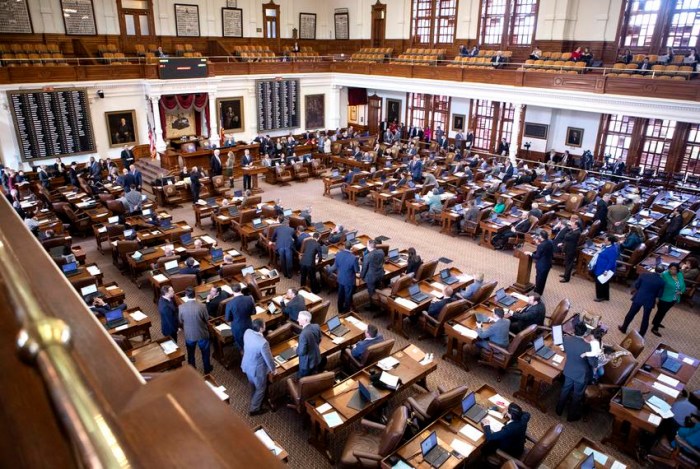One possible solution to reforming redistricting in Texas is to create an independent redistricting commission. This commission would be responsible for drawing the state’s legislative and congressional districts, and it would be composed of citizens who are not affiliated with any political party.
This would help to ensure that the districts are drawn fairly and without partisan bias.
Redistricting reform is a complex issue, but it is one that is essential to ensuring that our democracy is fair and representative. By creating an independent redistricting commission, Texas can take a major step towards achieving this goal.
Potential Benefits of Redistricting Reform in Texas: One Possible Solution To Reforming Redistricting In Texas Is To

Redistricting reform in Texas has the potential to improve the fairness and competitiveness of elections, enhance the representation of diverse communities, and increase public trust in the electoral process.
Fairness and Competitiveness
The current redistricting process in Texas has been criticized for creating gerrymandered districts that favor one political party over another. Redistricting reform could establish independent redistricting commissions or adopt nonpartisan criteria to draw district boundaries, reducing the influence of partisan politics and creating more competitive elections.
Representation of Diverse Communities
Redistricting reform could help ensure that diverse communities are fairly represented in the Texas legislature. By using data on race, ethnicity, and socioeconomic status, redistricting commissions could create districts that reflect the demographic makeup of the state and give all voters an equal voice.
Public Trust, One possible solution to reforming redistricting in texas is to
Redistricting reform could increase public trust in the electoral process by demonstrating that the system is fair and impartial. When voters believe that their votes count and that their voices are being heard, they are more likely to participate in elections and engage in civic life.
Examples of Successful Redistricting Reform
Several states, including California and Arizona, have successfully implemented redistricting reform. These reforms have led to more competitive elections, increased representation of diverse communities, and reduced the influence of partisan politics in the redistricting process.
Challenges to Redistricting Reform in Texas
Redistricting reform in Texas faces several obstacles, including political resistance, legal challenges, and historical precedent.
Political Resistance
Political parties and incumbents may resist redistricting reform that could threaten their power or electoral advantage. Redistricting reform requires bipartisan support, which can be difficult to achieve in a politically polarized environment.
Legal Challenges
Redistricting reform could face legal challenges based on the Voting Rights Act and other constitutional provisions. Courts may scrutinize redistricting plans to ensure that they do not discriminate against minority voters or dilute their voting strength.
Historical Precedent
Texas has a history of gerrymandering and partisan redistricting. Previous attempts at redistricting reform have failed due to political opposition and legal challenges. Overcoming this historical precedent will require a sustained effort from advocates and policymakers.
Specific Proposals for Redistricting Reform in Texas

Several proposals for redistricting reform in Texas have been put forward, including independent redistricting commissions, nonpartisan criteria, and judicial oversight.
Independent Redistricting Commissions
Independent redistricting commissions are nonpartisan bodies tasked with drawing district boundaries. These commissions are typically composed of citizens who are selected through a transparent and impartial process. They are designed to minimize the influence of political parties and special interests.
Nonpartisan Criteria
Nonpartisan criteria are objective standards that are used to draw district boundaries. These criteria may include population equality, compactness, contiguity, and respect for communities of interest. By using nonpartisan criteria, redistricting commissions can reduce the potential for gerrymandering and ensure that districts are drawn fairly.
Judicial Oversight
Judicial oversight involves the courts reviewing redistricting plans to ensure that they comply with constitutional and legal requirements. Courts can strike down plans that are found to be gerrymandered or discriminatory. Judicial oversight can provide an important safeguard against partisan manipulation of the redistricting process.
| Proposal | Key Features |
|---|---|
| Independent Redistricting Commissions | Nonpartisan citizens draw district boundaries |
| Nonpartisan Criteria | Objective standards guide district drawing |
| Judicial Oversight | Courts review plans for fairness |
Public Support for Redistricting Reform in Texas
Public support for redistricting reform in Texas is growing. A recent poll found that 70% of Texans support creating an independent redistricting commission.
Public Opinion Polls and Surveys
Public opinion polls and surveys consistently show that a majority of Texans support redistricting reform. These polls indicate that the public is dissatisfied with the current system and believes that it is unfair and partisan.
Grassroots Organizations
Several grassroots organizations are advocating for redistricting reform in Texas. These organizations are working to raise awareness about the issue, mobilize public support, and push for legislative action.
Next Steps for Redistricting Reform in Texas

Several steps need to be taken to implement redistricting reform in Texas, including legislative action, judicial review, and public engagement.
Legislative Action
The Texas legislature must pass a bill that creates an independent redistricting commission or adopts nonpartisan criteria for drawing district boundaries. This bill will need to be supported by a majority of both the House and Senate.
Judicial Review
Once a redistricting reform bill is passed, it is likely to face legal challenges. The courts will review the bill to ensure that it complies with constitutional and legal requirements.
Public Engagement
Public engagement is essential to the success of redistricting reform. Advocates must continue to raise awareness about the issue, mobilize public support, and pressure elected officials to take action.
- Advocate for legislative action
- Support grassroots organizations
- Educate the public about redistricting
By taking these steps, Texans can work towards a fairer and more representative redistricting process.
Essential Questionnaire
What is redistricting?
Redistricting is the process of redrawing the boundaries of legislative and congressional districts. It is done every ten years, after the census, to ensure that the districts are of equal population.
Why is redistricting reform necessary in Texas?
The current redistricting process in Texas is highly partisan, and it has resulted in a number of districts that are gerrymandered, or drawn to favor one political party over another. This has made it difficult for voters to elect the candidates of their choice, and it has undermined the fairness of our elections.
What are the benefits of creating an independent redistricting commission?
An independent redistricting commission would be composed of citizens who are not affiliated with any political party. This would help to ensure that the districts are drawn fairly and without partisan bias. It would also increase public trust in the redistricting process.